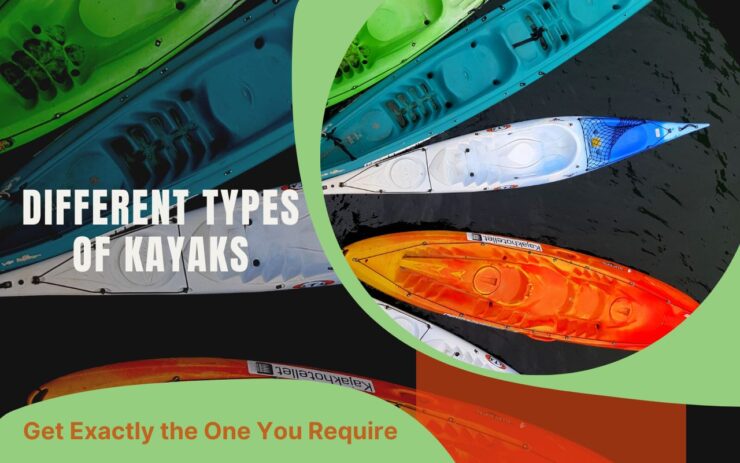Getting into the kayak game is no easy task.
While it is fun and exciting because you are after all beginning a new chapter in your life where you will be traversing the waters in your own one-person vessel, picking one is definitely not simple.
As is typically the case with most other things, picking the right kayak is anything but straightforward.
There are many different options to choose from on the market these days.
It is actually quite difficult to browse through them all since it is not always so clear what the differences between them even are.
Why are there so many options and do you really need to look through all of them to be able to get the right one for your needs? Of course not, but you still have to know about the different types and what they are.
Your purchase can only happen when you have the necessary information on your side to make an educated guess and pick the right model to fulfill your needs.
Going in blindly is not the best way to do this and it will probably end up being a bad buy in the end.
It is always smarter to browse and plan for a bit longer and then buy the right kayak.
Without further ado, let us talk about different types of kayaks and what they are so that you can get exactly the one you require.
Table of Contents
ToggleSit-Inside Kayaks
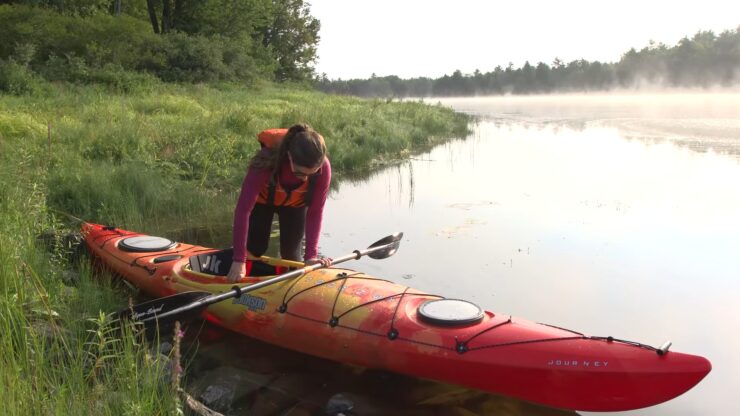
Let us start things off with the most basic distinction of kayaks, which deals with how you sit inside the vessel and the look of its cockpit.
The sit-inside kayaks, as their name suggests, are boats where you actually are inside a cockpit all the way with your legs stretched in front of you. The seating position is low and the hull has edges like a regular boat or a kayak.
This type of kayak is usually longer and leaner, meant for speed and faster paddling.
It can come in various lengths but usually, they are between 8 and 12 feet long.
Since they are long and narrow, they do not offer great balance.
This means that you cannot stand up in them while paddling because they can easily flip over.
As their name tells you, they work only with the kayaker sitting inside and doing their thing. Be it fishing or just relaxing, you do it by leaning back in the seat.
They usually have enough room for plenty of gear and good max load capacity, but not the best. For that, you will need the other of the two most common kayak types.
Sit-On-Top Kayaks
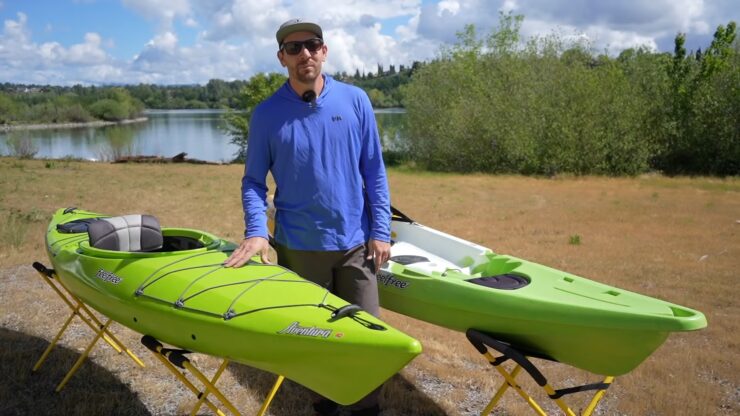
Here we have a kayak type that is the direct opposite of basically everything that the sit-inside kayaks offer.
First of all, their hulls are very different as there is no space inside like a traditional board.
They resemble paddling boards more than actual boats as there is no cockpit to sit inside of.
Instead, the chair is perched up. You sit on a chair that is attached to the board below you and therefore have a much higher sitting position.
Sit-on-top kayaks are wider and shorter and their bow is usually the only pointy side.
The stern is typically blunt, meaning the kayak does not achieve as much speed as its aforementioned counterparts.
Instead, however, they are much better at maneuvering and can make sharper and faster turns.
The biggest advantage of their built comes in the balance they offer though.
The main reason why certain kayakers pick these models is this: they offer enough stability and space for standing up. For serious fishermen, this is very important but it is also good for hunters and photographers.
Casting while standing has many benefits and it is more optimal. Besides, it is always good to have more than one way to do things.
On top of this, sit-on-top kayaks are generally bigger and heavier with most being between 10 and 14 feet in length.
Also, they can carry more load and therefore more of your stuff.
Multiple Person Kayaks
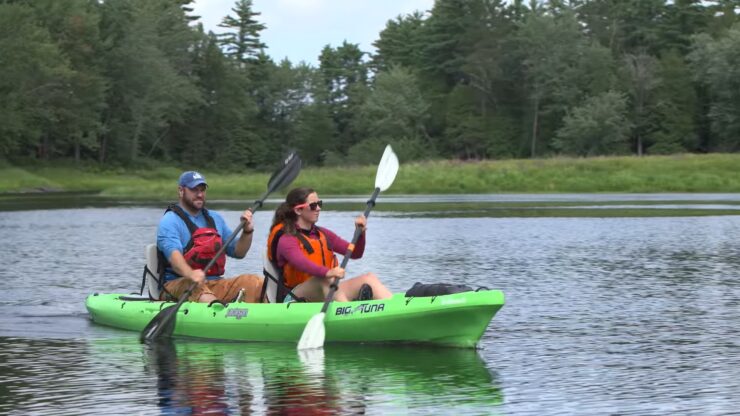
While it may seem that all kayaks are built for one person to paddle in, that is not the case.
There are many two-seat kayaks with two seats one in front of the other.
These are bigger and other than the fact that they fit two paddlers at once, everything else is the same.
There are even bigger versions for three or even four people. The four-seat kayaks are typically sit-on-top models due to the need for more balance and more space to the sides.
Some also have pedals and are operated using the legs and feet. Paddling is of course still an option.
Certain kayaks have extra features like outriggers for extra balance to support the extra weight.
Inflatable Kayaks
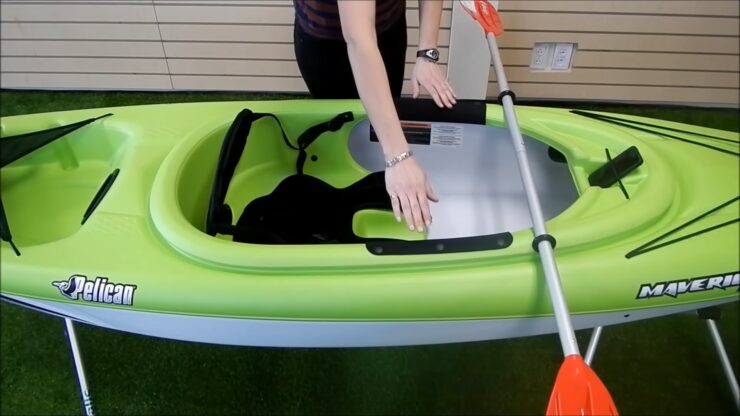
Not all modern kayaks are made of solid, one-piece hulls either.
While the majority is polyethylene plastic with composite materials and wood also being a common occurrence, there are also kayaks that are inflatable.
These are a breeze to store and transport as they can fit inside bags.
However, you have to bring a pump and all of the other equipment cannot be placed inside of it while it is on the roof of your car or on the trailer. They do have their disadvantages too.
For example, they are not as sturdy and cannot go through the same amount of wear and tear. For more serious kayaking it is always better to go with polyethylene plastic.
Fishing VS Touring Kayaks
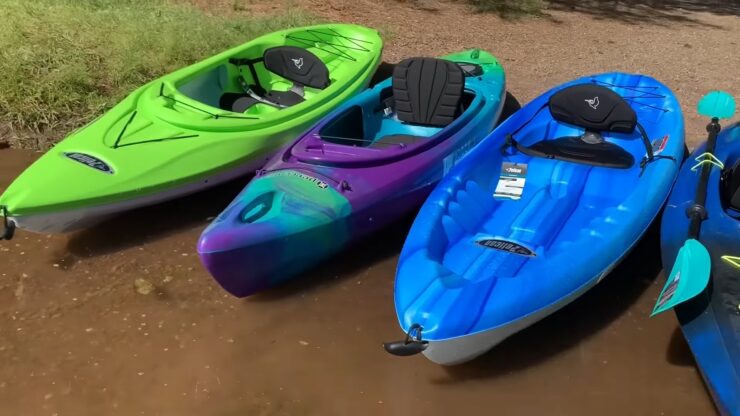
Lastly, we have to talk about the role of certain kayaks. Despite anything discussed above, for some kayakers, it is all about whether it is meant for anglers or for recreation enthusiasts.
Fishermen need different (and more) features than those looking for some light outdoor fun.
A fishing kayak needs to be equipped with different types of mounts, railings, bungee strings, and holders.
Fishermen need a ton of space for their gear and a regular kayak will not do. That is why touring kayaks exist for those looking for some lighthearted fun and paddling.
They do not come with extra features or places to attach gear.
Of course, they are still very capable and can carry a lot, but they are not made with fishermen in mind. If you are an avid angler, always look for fishing kayaks.
Meet Maria Alexander, the fearless adventurer steering the ship at KayakPaddling.net. Her mission? To convince you that life’s too short for dry land and that the best stories always start with “So there I was in my kayak…”
Related Posts:
- 16 Best Kayak For Beginners 2024 - Kayaking Adventure Gear
- 12 Best Beach Wagons & Carts 2024 - For All-Terrain
- 13 Best Fishing Kayak Under $500 in 2024 -…
- 10 Best Fish Finders Under $200 2024 - Top Affordable Picks
- How to Stay Safe on Slow Moving Waters When Paddle Boarding?
- 13 Best Kingfish Reels in 2024 - Pick the Best for You!

